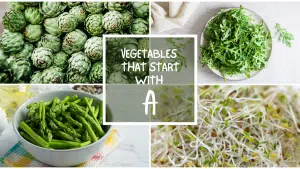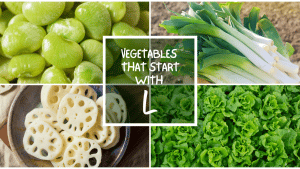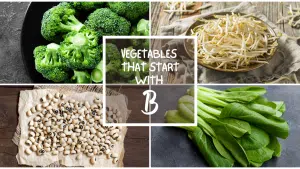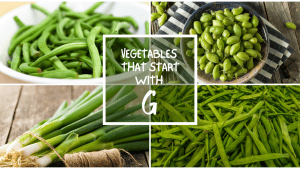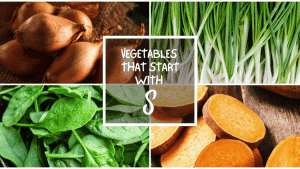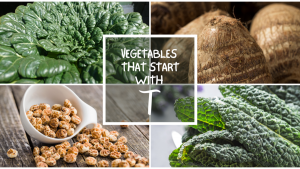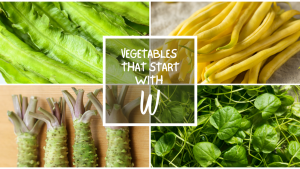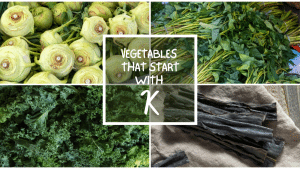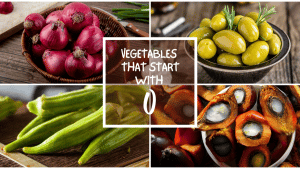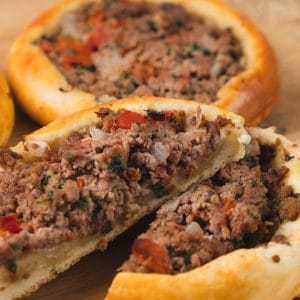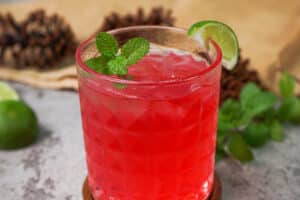All The Vegetables That Start With P
Important Note: When you buy through our links, we may earn a commission. As an Amazon Associate we earn from qualifying purchases. Content, pricing, offers and availability are subject to change at any time - more info.
To enjoy meals, you need to have a variety of different vegetables away from the common ones. However, this will prove difficult if you have inadequate knowledge of the various vegetables in the market. To help you expand your knowledge base, here is a list of all vegetables that start with P.
- Pak Choi
- Paracress
- Parsnip
- Pea
- Pearl Onion
- Pigeon Pea
- Potato
- Prussian Asparagus
- Parsley
- Prairie Turnip
- Pignut
- Potato Onion
- The Final Letter
Pak Choi
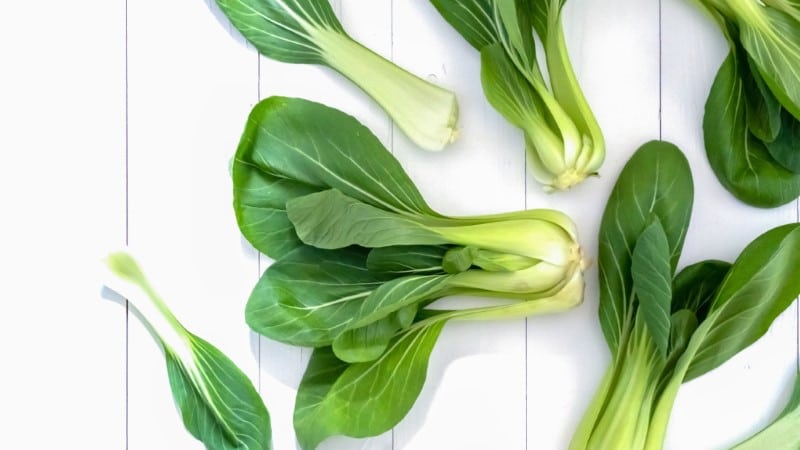
The scientific name for Pak Choy is Brassica rapa subsp. Pak Choi is a cruciferous green vegetable common in East Asia, Southern China, Southeast Asia, and Northern Europe. The Pak Choi is tolerant of cold weather.
This Chinese vegetable tastes like green cabbage with a little bit tone of pepper. The pak choi is sweet and with a milder taste compared to spinach. However, the bulb of this vegetable is less tasty than the green leafy parts. The leaves are tender and thin and cook quickly. The white stalks are light, crunchy, and succulent.
Pak Choi is a leafy vegetable with crispy thick white-green stalks attached to a loose head and broad green leaves. This vegetable varies in size, and both the leaves and stems are edible. Pak Choi is also commonly referred to as the white Chinese cabbage.
Pak Choi vegetable often appears in Asian cuisines. These vegetables can be shredded and combined with other vegetables to make a salad that is eaten raw. You can also chop the leaves and fry them quickly with olive oil and ginger and serve as a top dish for grain meals like rice. Pak Choi is also a suitable replacement for lettuce in making sandwiches. These vegetables are also diced and added in Asian-inspired soup recipes.
Pak Choy vegetables are rich in Vitamin E, Vitamin C, and beta-carotene, antioxidants that lower your cancer risk. This is by preventing free radicals from damaging your cells. These vegetables are also rich in flavonoid quercetin, which reduces inflammation lowering your risk of developing diabetes and cancer. Folate and Vitamin B6 in the pok choy vegetables lower your risk of heart diseases.
Paracress
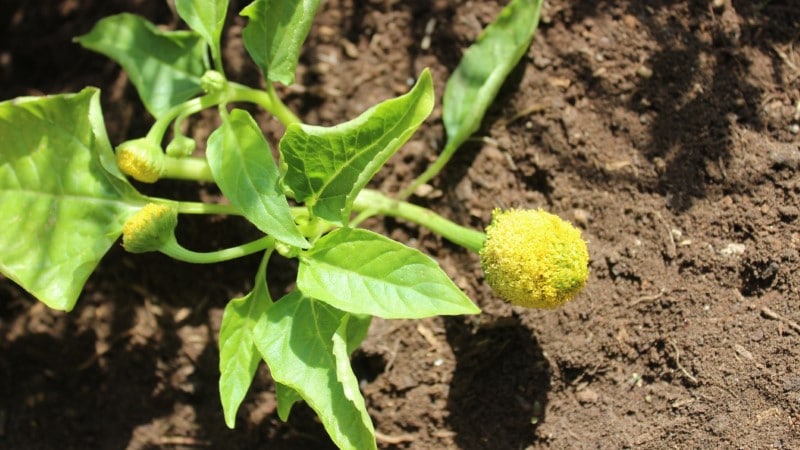
The scientific name for paracress is Acmella oleracea. This vegetable plant is native to tropical Brazil and is commonly known as the toothache plant. The plant is a flowering species herb belonging to the family Asteraceae. This plant is widely distributed in South America and grows wildly in wet locations.
This is a flowering herb that is rich in medicinal value. The leaves are added to salads due to their pungent flavor. Paracress has a mild taste that resembles that of Echinacea. The plant has long, narrow pods which are eaten as vegetables. However, it is worth noting that once the leaves of paracress are cooked, they lose their taste.
These vegetables contain spilanthol, a natural anesthetic compound that produces a numbing effect on the mouth, which helps deal with toothaches. This plant has a bitter flavor which stimulates the salivary glands to produce more saliva preventing dry mouth. Paracress vvegetables also contains a compound that helps deal with gastric ulcers by reducing inflammation and increasing the growth of cells.
Parsnip
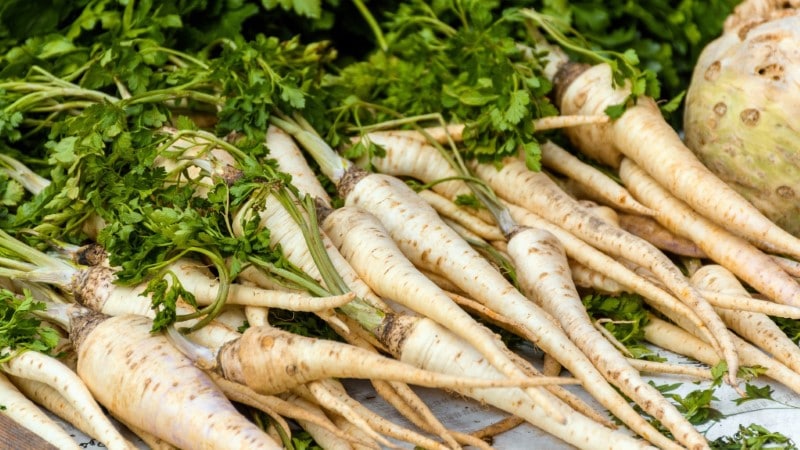
The scientific name for parsnip is Pastinaca sativa. This is a root vegetable that is related to carrots. However, they resemble carrots but are pale and with a more robust flavor. The parsnip is a hardy biennial plant mainly grown for its edible roots and is native to Eurasia.
The parsnip roots are smooth, fleshy cream roots that can either take a cylindrical or bulbous shape. These roots can grow up to a diameter of 3inches and closely resemble the carrots. Parsnip has a nutty, sweet flavor with earthly taste and is mildly peppery. These roots were natively used as sweeteners in Europe. However, they only become sweeter when cooked only.
Parsnip can be eaten raw just like carrots but are better eaten cooked. You can either peel them or use them with their skin; however, you need to scrub them thoroughly. Parsnips often serve as a substitute for potatoes. They can be mashed, fried, and roasted. These vegetables can be cooked into soup or backed into delicacies the same as you would with potatoes.
Parsnip vegetables are rich in magnesium and calcium minerals, which are essential in developing strong bones. These vegetables also contain insoluble fibers, which are good at maintaining a healthy digestive tract and help prevent diverticular disease. Parsnips are packed with vitamin C, which helps give the skin wound-healing abilities and reduce your risk of stroke.
Pea
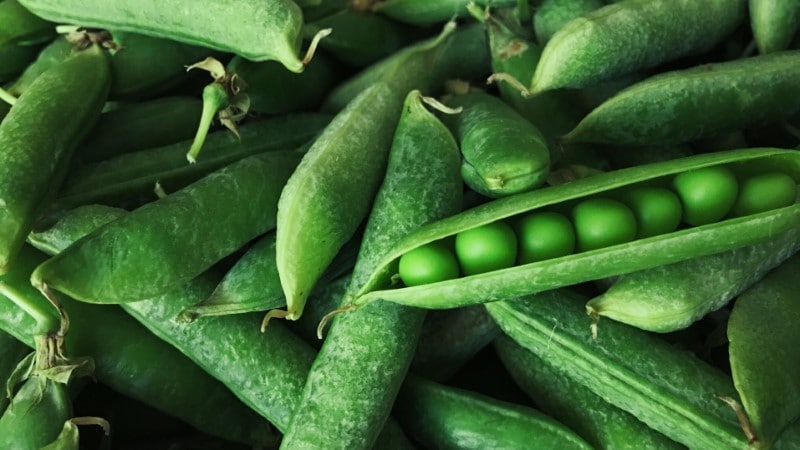
The scientific name for pea is Pisum sativum. Pea is native to North Africa and Western Asia. However, some varieties of peas wildly grow in Ethiopia, Iran, and Afghanistan. The pea plant can withstand extreme cold weather and can therefore be cultivated in regions throughout Europe, India, and China.
Peas belong to the legume family like beans because they are found contained in pods. Because of their green color and uses, peas are classified as vegetables. Pea seeds are mostly small, green-yellow, and round, encased in green or yellow pods, depending on the variety. Pea has a sweet-savory taste, but the flavors will vary depending on the variety.
You can blanch the peas, add a little freshly chopped mint and dress with olive oil and lemon juice to make a summer salad. Peas are also lightly boiled in water, tossed into stews to add color, and served alongside starch dishes like rice. You can also fry the peas in little olive oil with some touch of onion and sliced almonds and serve with meat and grilled fish.
Peas benefit from maintaining healthy blood sugar levels because of their low glycemic index and high content of proteins and insoluble fibers. Peas are also rich in magnesium, calcium, and Potassium, essential minerals that prevent high blood pressure-lowering your risk of heart disease. The insoluble fibers in peas control and prevent the sudden spike in blood sugar levels.
Pearl Onion
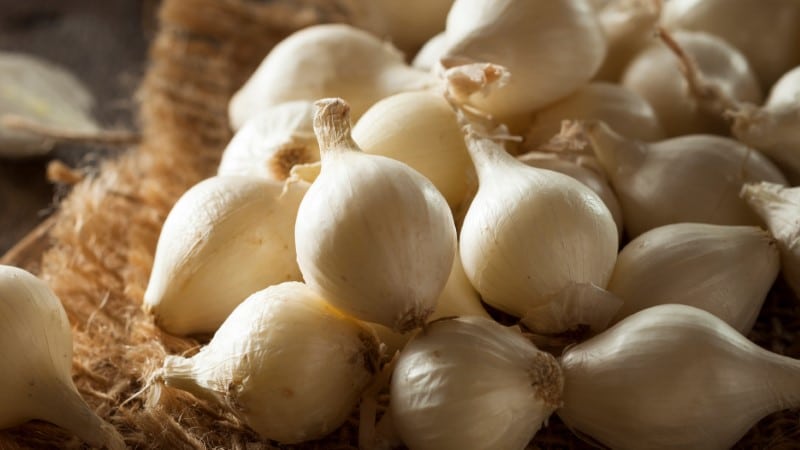
The scientific name for pearl onion is Allium ampeloprasum var. Sectivum and belongs to the Amaryllidaceae family. Pearl onions are native to Asia and grown in North America, Europe and Australia and are commonly found in groceries and farmer markets in America.
Pearl onions are also called cocktail onions or baby onions because of their small size. These onion varieties are small and with a mild sweet nature. The pearl onions take a globe shape with pointed ends and are surrounded by a thin, white, and light parchment loosely attached to the bulb. The bulb of these onions is white and with thin rings. Pearl onions are crispy, firm and with a mild sweet-savory flavor.
Pearl onions are often used to add their sweet, mild flavor to various dishes. For easier preparations, blanch the onions in hot water to be able to peel off the skin easily. The pearl onions can be caramelized by adding butter, sugar, and vinegar. You can also braise the onions in sugar, butter, and vegetable stock. Pearl onions can also be roasted by adding olive oil, vinegar, pepper, salt, and basil.
Pearl onions contain Vitamin C, a good detoxifier of harmful heavy metals from the body, keeping your system clean and healthy. These onions have traces of sulfur, which, when combined with, is good for your liver. Onions are also rich in flavonoids, antioxidants that give your body the ability to prevent tumors and boost immunity.
Pigeon Pea
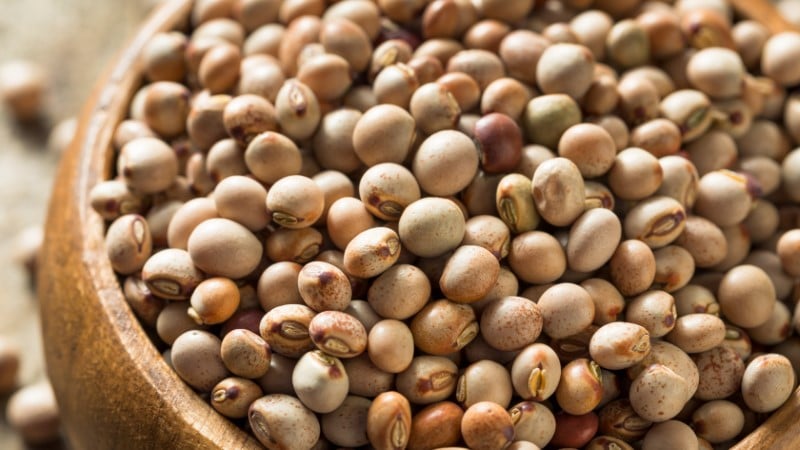
The scientific name for pigeon pea is Cajanus Cajan. Pigeon pea is native to India and grown in Europe, America and Africa. These are part of the leguminous family closely related to the peanut and are cultivated for human consumption and as animal feeds.
Pigeon peas have a crispy texture and a nut-like taste. These nuts are enclosed in pods that are green when young and turn to a brown color when mature. When fresh, the peas are bright green. However, the pigeon peas can be sold dried. Dry pigeon peas are similar to black-eyed peas.
Pigeon peas’ fresh pods and seeds are used as vegetables in spicy sayor soups and other south Asia side dishes. You can prepare the seeds and eat them roasted. In other recipes, the seeds of pigeon pea are dried and cooked to make sauces used to accompany meals like yams or rice. The young pigeon pea seeds can be consumed fresh in salads mixed with other vegetables.
Pigeon peas are rich in folic acid and iron, which act as a natural iron boost for your body. Folic acid is essential to pregnant women by reducing their risk of preterm delivery, anemia, and miscarriage. Pigeon peas also contain potassium minerals that help maintain a steady blood flow and control blood pressure, reducing cardiovascular disease risk.
Potato

The scientific name for potato is Solanum tuberosum. Potatoes are native to the Peruvian-Bolivian Andes and are cultivated in South America, Europe and Africa and many parts of the world. These tubers have a pleasant savory taste.
Potato is a tuber or root vegetable, oval- round in shape, with some small patches called eyes. Depending on the variety, the skin can be; yellow, white, brown or reddish. Beneath the thin skin is a solid white flesh that is not edible unless cooked. Potatoes have low sugar content and have a mild taste with a creamy, starch, and slightly dense texture.
Potatoes can be eaten boiled. However, boil them on their skin for a shorter time to prevent losing nutrients. You can fry potatoes by cooking them in hot oil to make meals like fries or potato chips. Potatoes can also be baked to retain more nutrients and served with toppings like butter and cheese.
Potatoes contain resistant starch, which improves the health of the gut by acting as food for the good bacteria and preventing constipation and indigestion. Potatoes have traces of Potassium, a mineral that regulates sodium levels in the blood, reducing your blood pressure. Potatoes are rich in antioxidants, which reduce cell damage in the body by fighting free radicals.
Prussian Asparagus
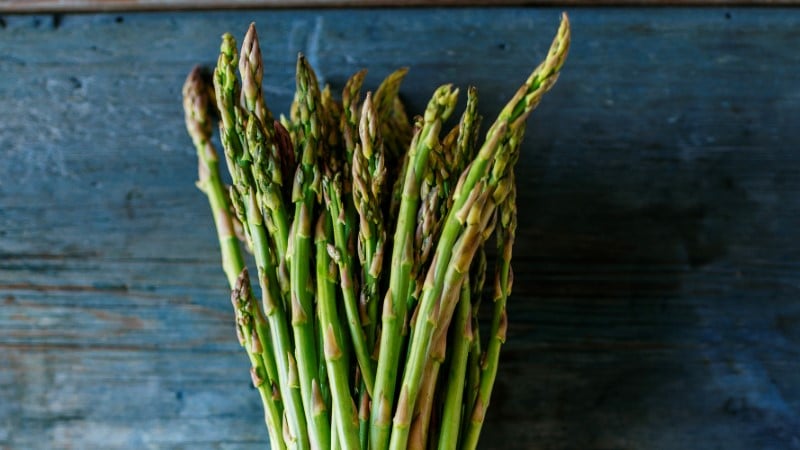
The scientific name for Prussian is Ornithogalum pyrenaicum. This is a herbaceous plant from the family asparagaceae. The young spears and shoots of the Prussian asparagus plant are what are edibles as vegetables. The plant of this vegetable originates from Northern Africa, Western Asia and Europe.
The asparagus plant has leaves that look like scales from the underground and smooth erect stems with feathery foliage. Depending on the cultivation style, these vegetables are either white or green. The Prussian aspraregus vegetables have a strong flavor resembling broccoli and mushrooms.
Asparagus can be eaten raw to benefit from its rich nutrients. Chop these vegetables, combine them with tomato and lettuce and serve raw as salads. You can blanch the asparagus in boiling water till tender, add a little salt and olive oil and eat them solo. These vegetables can also be incorporated into the sauce. Chop the asparagus into chunks, add butternut squash and eggplant and steamer in a pan shortly with little oil
Aspraregus vegetables are rich in fiber, which is essential in boosting the gut’s health, lowering blood pressure, and aiding in bowel movement. Vitamin K and calcium in these vegetables are beneficial in creating and maintaining strong and healthy bones. Aspraregus also has traces of Potassium which lowers your risk of cardiovascular disease by maintaining normal blood pressure.
Parsley
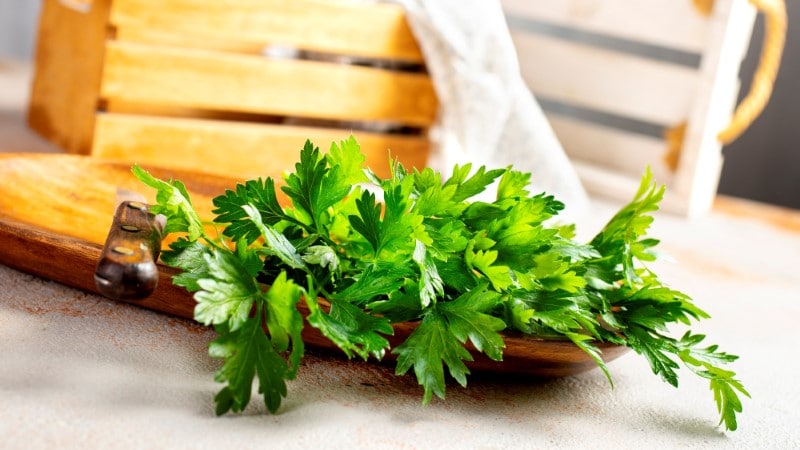
The scientific name of parsley is Petroselinum crispum. This is a flowering plant native to the Mediterranean. Other names of parsley are Hamburg and rock parsley.
Parsley vegetables are rich in herbal flavor and primarily used in Middle Eastern, American and European cuisines. Parsley is often added fresh and raw on top of stews, soups or fried meat, and grilled fish to add flavor.
Parsley vegetables are rich in Vitamin K, which is essential in the building and development of strong bones in the body. These vegetables are also a source of Vitamin C, which is beneficial to boost your immune system and give your body the ability to fight diseases and infections. Parsley also contains strong antioxidants, which reduce your risk of developing cancer cells and tumors.
Prairie Turnip
The scientific name for prairie is Ornithogalum pyrenaicum. Turnip is a root vegetable grown in soils that are well-drained and favored for its edible roots. The prairie turnip is native to the dry woodlands of Central and North America and belongs to the leguminous family. The other name of the turnip is Indian breadroot and Pomme Blanche.
The prairie turnip is a tuber vegetable with elongated roots at its end and a spindle shape. These tubers have a thin skin that covers white flesh. The turnips have a mild spicy flavor when raw. When cooked, these legume vegetables are nutty, sweet and have an earthly flavor.
Prairie turnip can be eaten fresh and raw or combined with other vegetables to make salads. You can also prepare these vegetables by boiling them before serving them for maximum nutrition benefit. Prairie can also be ground into starch.
Prairie turnip vegetables are rich in Vitamin B6, which is essential for the production of hemoglobin and boosts the brain’s development and functioning. Selenium contained in the prairie turnip can reduce inflammation, boost blood flow and lower your chances of coronary heart disease. These vegetables contain insoluble fibers, which keep the digestion process in check, preventing a sudden spike in blood levels and boosting insulin sensitivity.
Pignut
The scientific name for pignut is Conopodium majus. The pignut thrives naturally in fertile soils and is distributed across most eastern United States. The pignut plant is native to regions like Texas, Central Florida, Mississippi and Alabama. Other names commonly used to refer to the pignut are hognut and earthnut.
The pignuts are dark brown and covered by four husks split open to expose the nut when mature. These are tuber vegetables that grow in the wild. The pignuts are very tasty and have a flavor of sweet chestnuts with some touch of spicy taste.
These tuber vegetables have a bitter taste but can be eaten raw. You can also crush the nuts to make flour which can be used in baking. The pignut can also be boiled and oil extracted from them to be used in cooking. These tubers can also be candied.
Pig nuts are packed with calories, which are very beneficial for gaining weight quickly or provide the properties to keep your body fit if taken in low amounts. These nuts are also rich in protein, which is essential for the growth of muscles, bones, and tissues. Pignuts contain fibers that help maintain healthy digestion free from constipation and obstruction. Calcium levels in these nuts boost the formation of strong bones in the body.
Potato Onion
The scientific name for potato onion is Allium cepa var. Potato onions belong to the allium family and are related to garlic. However, the name of these onions is derived from how they are grown, just like potatoes but have no relation to potatoes. Potato onions are grown on a small scale in parts of North America, Europe, Russia and Central Asia. Due to their nature to grow in clusters, they make mechanical harvesting hard; that’s why they aren’t grown on large scales.
The potato onions grow in clusters, and the bulbs are attached at the base of the plant. The other names of these onions are underground onion and multiplier onion. Potato onions have a mild smooth flavor compared to other onions with a touch of garlic. These onions have brown skin covering a white layered bulb inside.
Like other onions, the potato onion appears in many dishes. Its mild flavor makes it an excellent option to be chopped into salads with other vegetables. You can also cut the onions into pieces, fry them briefly in olive oil, and sprinkle them on top of meat meals and tilapia. The potato onion is also an excellent recipe for making stews and soups if fried in combination with tomato.
These vegetables are rich in Vitamin C., which is essential in boosting the body’s immunity. Onions have also been found to have properties to regulate the blood sugar levels in the body. Having potato onions in your diet will help your body produce new red blood cells preventing you from anemia.
The Final Letter
Captured here are all the vegetables that start with P. This should help you the next time you go shopping for groceries. Challenge yourself to try each one of them and get to experience their unique tastes and their rich nutritional value.


